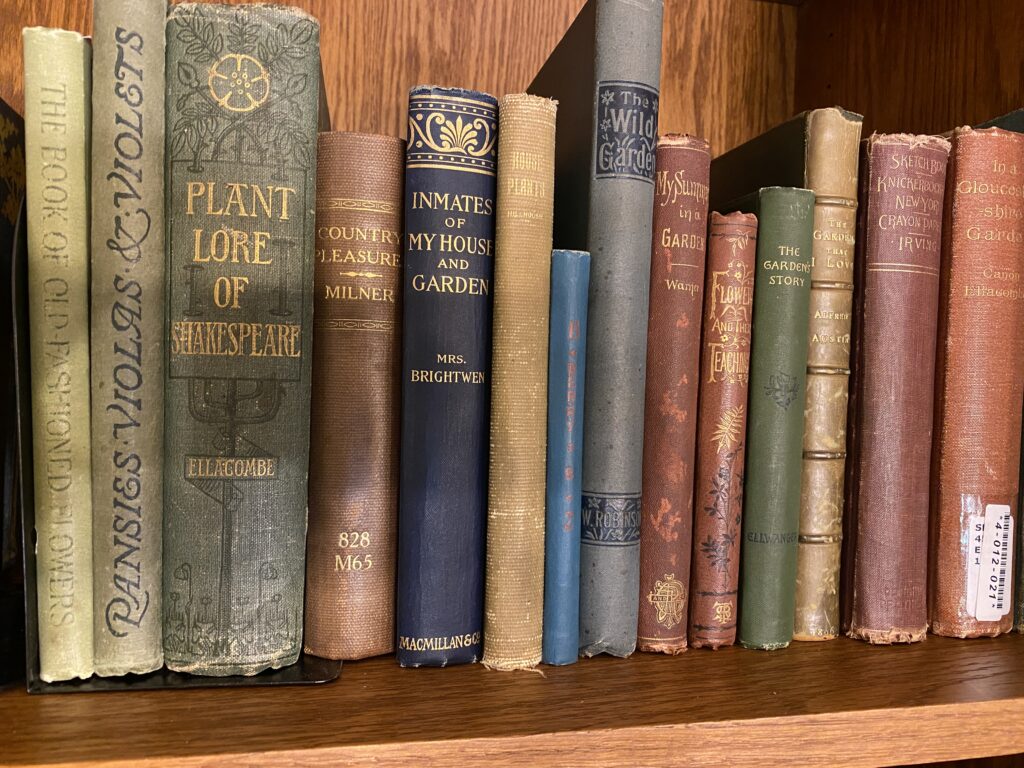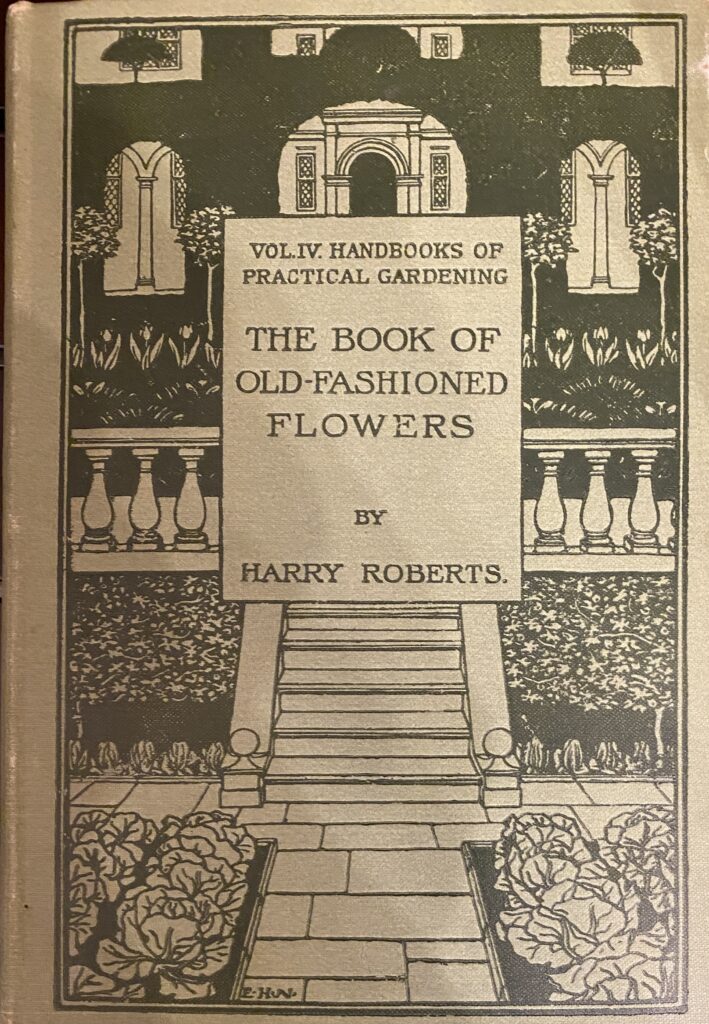
Short version:
It is possible that the covers of books published in the 19th century may contain arsenic, lead, or other heavy metals that could be harmful to one’s health with prolonged exposure.
For more information, please visit the Poison Book Project website.
Long version:
Arsenic and Old Gardening Books sounds like the title of a cozy mystery, doesn’t it? I should know because I have been reading a lot of cozy mysteries recently. In fact, I just read Death of a Perfect Wife by M. C. Beaton, and the murder weapon was… can you guess? Yes, it was arsenic.
The other day, I was also scrolling through Instagram and the algorithm decided that it would show me a post from the Denver Botanic Garden because it ticked off a few boxes of my demonstrated interests, including—obviously—books and gardening.
That Instagram post was about what artifacts they wear gloves to handle and what they handle with their bare hands.
I’d previously read that for old books, most librarians and book collectors choose NOT to wear gloves because it is easier to accidentally tear old book pages, which can be brittle, if they are wearing gloves. Of course, if the book is extremely rare and valuable, one might make an exception and wear gloves, and be very careful turning each page.
But according to that Instagram post, which was meant to be educational, they do wear gloves to handle some books with green covers because some of them were colored green using arsenic.
I wouldn’t have thought much more about that Instagram post, except one of the green books they showed had the same cover as several books in my personal library, including this one:

This book, The Book of Old Fashioned Flowers by Harry Roberts was published in 1901 so it is possible that the green of its cover—and it is greener than this picture shows—comes from something other than arsenic. Or it could be from arsenic.
According to the Poison Book Project,
“In early 2019, analysis of 19th-century, cloth-case publishers’ bindings at Winterthur Library revealed bookcloth colored with “emerald green,” or copper acetoarsenite, an inorganic pigment known to be extremely toxic. This pigment’s popularity in England and the United States during the Victorian era is well documented.”
Hmmm…
So what did I do with this information?
Because I cataloged all the books in my library using the CLZ collector software, I was able to sort by published date and came up with 16 books in my collection that were published between 1820 (a red-colored cover) and 1901 (the book pictured above). Then I found them all and put them together on a top shelf.
I’m also going to find another 36 books I own that were published between 1901 and 1910 and put them on the top shelves, too.
Then I’ll print bookmarks with “handle with gloves” and stick one in each of those books, just to remind myself to do that.
Is it likely I have books that are poisonous?
I looked through the database of books tested for the Poison Book Project that tested positive for arsenic in the covers and did not see any of mine listed. But their database only contains 313 books found so far, and I don’t think they’ve tested that many.
Unfortunately, the methods of testing for arsenic in old book covers require specialized equipment found only in a lab, so I cannot test for issues with my old books. Most of us can’t.
But to be on the safe side, until I know more, I’ll wear gloves when handling my oldest books. But I won’t get all freaked out about it because I’ve handled them without gloves so far with no ill effects. I also read in my research that to cause real harm I would have to eat the cover, which I don’t plan to do.
But now that I know what I know, I’ll be more careful handling those books.
A little story about used books
I’ll wrap this blog post up with a little story.
For years I worked with a woman who was squeamish about buying any used books, no matter how new or old. Her imagination ran wild with thoughts of where those books might have been and what was on those covers and between the pages. She was thinking dirt and germs, not arsenic, lead, and other poisons.
She shuddered when I talked about the used books I bought and actually handled with my bare hands.
To make a long story longer, she really wanted copies of some of the old Little Golden Books she remembered from her childhood. But since the ones from her childhood were long out of print, her only option was used books. So she bought some online and had them shipped to a friend, who cleaned them and put them into archival book bags for her. Now she could at least see the covers of the books she remembered without actually touching them.
But I think she missed out on the best part of a book, which isn’t the cover. It’s what’s inside the book. Inside the book, one never knows what one might find. In old gardening books, I’ve found plant labels, pressed leaves, and old newspaper clippings! I’ve also found some of the most interesting tidbits about gardening that I would have never found if I hadn’t opened those books.
So I’ll continue to buy old books, open them, and read them.
But I’ll wear gloves if the cover is green or the book was published pre-1910 or so.


Fascinating! I learned something new today.